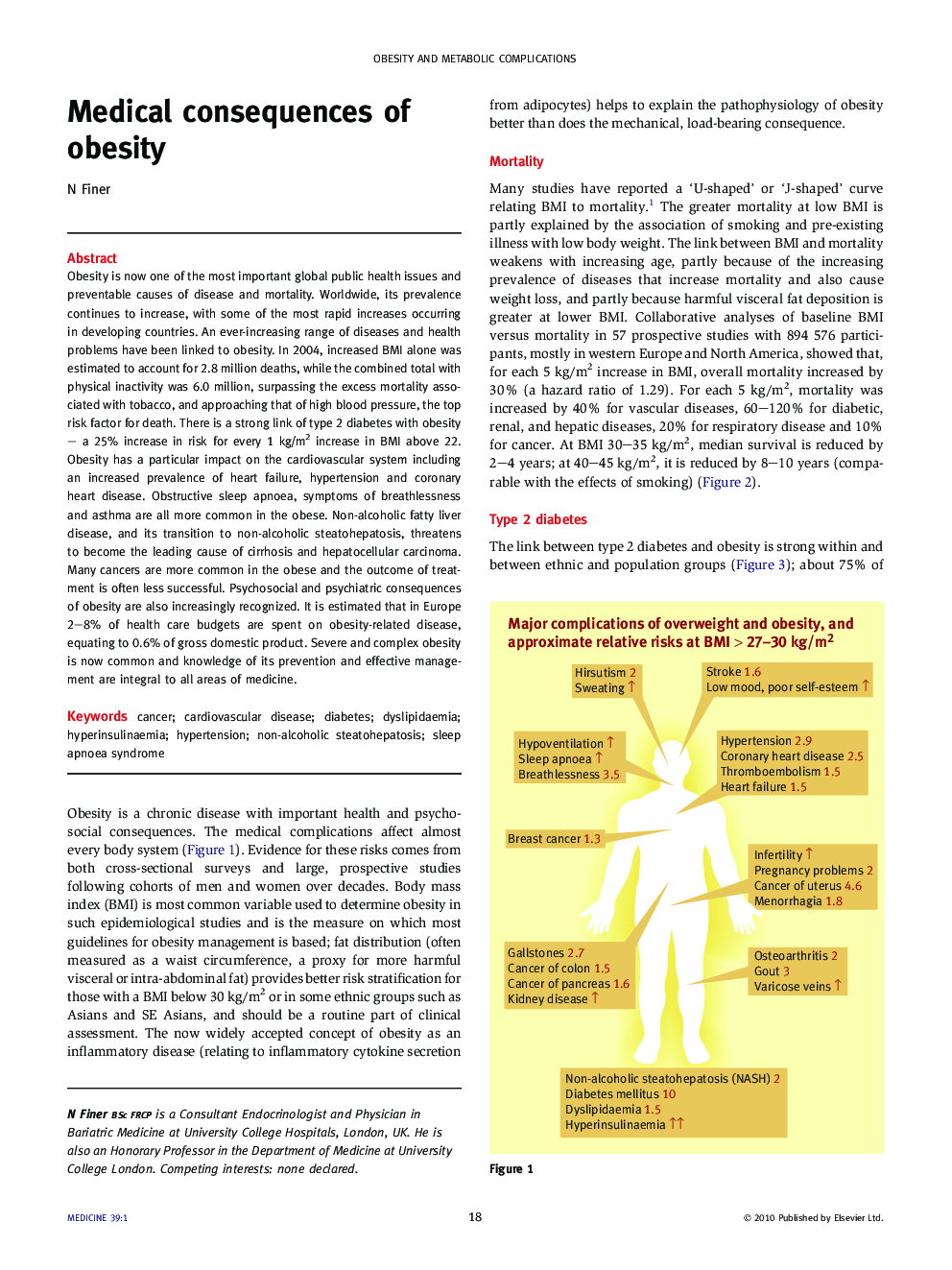| Article ID | Journal | Published Year | Pages | File Type |
|---|---|---|---|---|
| 3804242 | Medicine | 2011 | 6 Pages |
Obesity is now one of the most important global public health issues and preventable causes of disease and mortality. Worldwide, its prevalence continues to increase, with some of the most rapid increases occurring in developing countries. An ever-increasing range of diseases and health problems have been linked to obesity. In 2004, increased BMI alone was estimated to account for 2.8 million deaths, while the combined total with physical inactivity was 6.0 million, surpassing the excess mortality associated with tobacco, and approaching that of high blood pressure, the top risk factor for death. There is a strong link of type 2 diabetes with obesity – a 25% increase in risk for every 1 kg/m2 increase in BMI above 22. Obesity has a particular impact on the cardiovascular system including an increased prevalence of heart failure, hypertension and coronary heart disease. Obstructive sleep apnoea, symptoms of breathlessness and asthma are all more common in the obese. Non-alcoholic fatty liver disease, and its transition to non-alcoholic steatohepatosis, threatens to become the leading cause of cirrhosis and hepatocellular carcinoma. Many cancers are more common in the obese and the outcome of treatment is often less successful. Psychosocial and psychiatric consequences of obesity are also increasingly recognized. It is estimated that in Europe 2–8% of health care budgets are spent on obesity-related disease, equating to 0.6% of gross domestic product. Severe and complex obesity is now common and knowledge of its prevention and effective management are integral to all areas of medicine.
